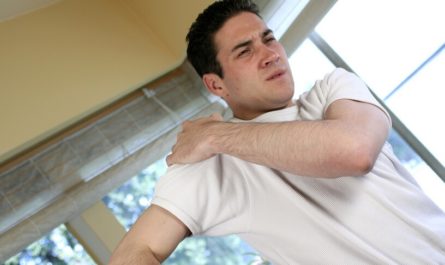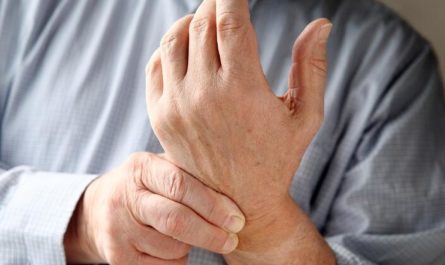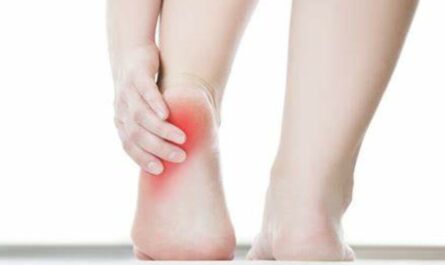Neck, shoulder, and arm pain on the left side can be a debilitating experience, affecting your daily life and overall well-being. Understanding the potential causes behind this discomfort is the first step towards finding relief and seeking appropriate treatment. This article will explore the most common causes of left-sided neck, shoulder, and arm pain.
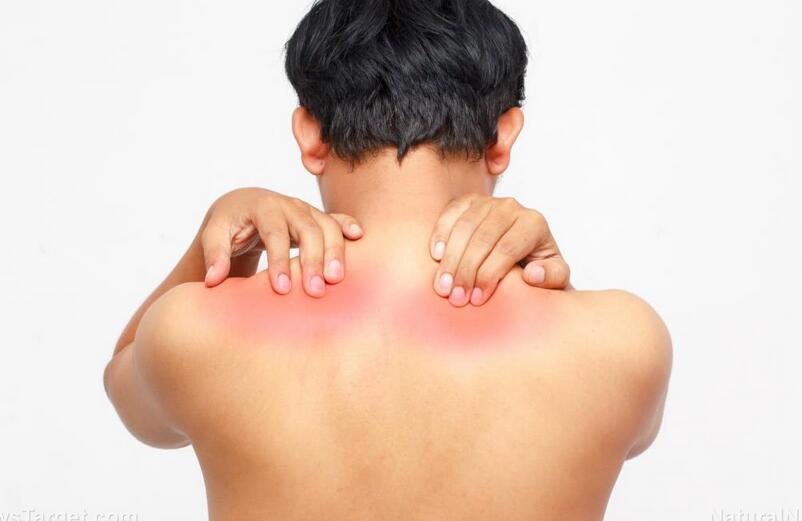
13 Causes of Neck Shoulder and Arm Pain on Left Side
1. Muscle Strain
One of the most frequent causes of left-sided neck and shoulder pain is muscle strain. The neck and shoulder region muscles, such as the upper trapezius and sternocleidomastoid, can become strained due to acute events like falls or repetitive movements over time.
Symptoms of muscle strain include pain that worsens with neck or shoulder movements and improves with rest. Headaches, neck stiffness, and numbness or tingling in the arm may also accompany the pain.
2. Poor Posture
Poor posture is a common cause of neck and shoulder pain, especially when it becomes chronic. Slouching or hunching forward for extended periods can strain the muscles, ligaments, and joints in the neck and shoulder area. Over time, this can lead to discomfort and pain on the left side.
To alleviate left-sided neck and shoulder pain caused by poor posture, it’s essential to maintain proper posture while sitting, standing, and walking. Exercising that strengthens the back and neck muscles can also help improve posture and reduce pain.
3. Pinched Nerve
A pinched nerve occurs when excessive pressure is applied to a nerve by surrounding tissues, such as muscles, tendons, or bones. In the case of left-sided neck and shoulder pain, a pinched nerve in the cervical spine (neck) can cause discomfort on the left side.
Common pinched nerve causes include herniated discs, bone spurs, and spinal stenosis. Symptoms may include sharp or shooting pain, tingling, numbness, or weakness in the left shoulder, arm, or hand.
4. Cervical Spondylosis
Cervical spondylosis is a degenerative condition that affects the joints and discs in the neck. As we age, the discs between the vertebrae in the cervical spine can become worn down, leading to pain and stiffness on the left side.
Symptoms of cervical spondylosis may include neck pain that radiates to the left shoulder, arm, or hand. Numbness, tingling, or weakness may also be present. Treatment options for cervical spondylosis include physical therapy, medication, and, in severe cases, surgery.
5. Rotator Cuff Injury
The rotator cuff is a group of muscles and tendons that stabilize the shoulder joint. Injuries to the rotator cuff, such as tears or strains, can cause left-sided shoulder pain that may radiate to the neck.
Common causes of rotator cuff injuries include repetitive overhead movements, trauma, and age-related degeneration. Symptoms may include pain, weakness, and limited range of motion in the shoulder.
6. Tendinitis
Tendinitis is the inflammation of a tendon, which is the tissue that connects muscle to bone. In the context of left-sided neck and shoulder pain, tendinitis in the shoulder or neck muscles can cause discomfort on the left side.
Repetitive movements, overuse, and poor posture can contribute to the development of tendinitis. Symptoms may include pain, swelling, and difficulty moving the affected joint.
7. Herniated Disc
A herniated disc occurs when the soft inner portion of a spinal disc protrudes through the tough outer layer. A herniated disc affecting the cervical spine can cause left-sided neck and shoulder pain.
Symptoms of a herniated disc may include shooting pain, tingling, numbness, or weakness in the left shoulder, arm, or hand. Pain in the shoulder blade region may also be present.
8. Cervical Disc Bulge
A bulging disc in the cervical spine can lead to left-sided neck and shoulder pain. These gel-like discs act as shock absorbers between the vertebrae, and when the inner portion protrudes and comes into contact with spinal nerves, it can cause pain and other symptoms.
Pain from a cervical disc bulge is typically shooting in nature, and additional symptoms may include tingling, numbness, weakness in the shoulder, arm, or hand, and pain in the shoulder blade region.
9. Thoracic Outlet Syndrome
Thoracic outlet syndrome (TOS) occurs when the structures passing through the thoracic outlet, such as the subclavian artery, subclavian vein, and brachial plexus nerve bundle, become compressed.
TOS can result from traumatic injury, repetitive overuse of the neck or arm, or atypical anatomy. Symptoms of TOS include one-sided neck and shoulder pain, chest pain, headaches, and numbness or tingling in the fingers. Color changes in the arm or hand may also be noticeable if the blood vessels are compressed.
10. Whiplash
Whiplash injuries often occur after a traumatic incident, such as a car accident or sports-related collision. This condition happens when the neck moves rapidly in one direction and then the other, irritating the neck’s muscles, nerves, and ligaments.
Symptoms of whiplash can include one-sided neck and shoulder pain, numbness in the arm, dizziness, ringing in the ears, blurred vision, irritability, or difficulty concentrating.
11. Heart Problems
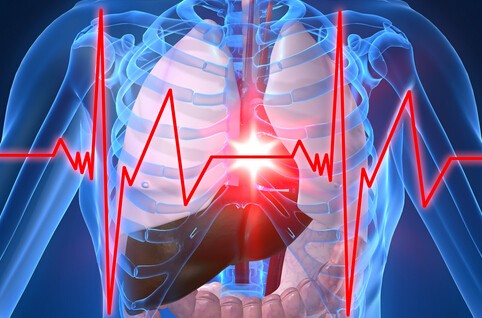
In some cases, left-sided neck and shoulder pain may be a symptom of underlying heart problems, such as a heart attack. The heart is located on the left side of the chest, and pain from a heart condition can radiate to the left arm, neck, and shoulder.
Other warning signs of a heart attack include tightness in the chest, shortness of breath, nausea, and lightheadedness. If you suspect you are experiencing a heart attack, it is essential to seek immediate medical attention.
12. Lung Cancer
While rare, certain types of lung cancer can cause left-sided neck and shoulder pain. A specific type called a Pancoast tumor often presents with sharp shoulder pain in its early stages.
Other symptoms may include neck, ribs, and shoulder blade pain, upper arm swelling, chest tightness, and unexplained weight loss.
Lung cancer-related pain is more commonly seen in individuals who smoke or have significant exposure to secondhand smoke.
13. Cervical Fracture
A sudden twist or significant impact to the neck or head can cause a cervical vertebral fracture, a severe and potentially life-threatening condition. This type of fracture can damage surrounding muscles, ligaments, nerves, and even the spinal cord.
Symptoms of a cervical fracture may include intense neck and shoulder pain, altered sensation in the arm, weakness or paralysis, difficulty breathing, and even death. Cervical vertebral fractures require immediate medical attention.
Self-Treatment Strategies for Left-Sided Neck and Shoulder Pain
If you are experiencing left-sided neck and shoulder pain, several self-treatment strategies may help alleviate your symptoms. These strategies benefit conditions like muscle strain, disc bulge, and cervical stenosis.
1. Over-the-Counter Pain Relievers
Over-the-counter pain relievers like acetaminophen (Tylenol) or nonsteroidal anti-inflammatory drugs (NSAIDs) such as ibuprofen (Advil/Motrin), or naproxen (Aleve) can help alleviate pain associated with muscle strain, disc bulge, and cervical stenosis.
2. Ice and Heat Therapy
Applying ice to the affected area for 15 to 30 minutes several times daily can help reduce inflammation and alleviate pain. Additionally, using a moist-hot pack over painful areas for up to 20 minutes at a time can help relax muscles and improve blood flow.
3. Rest and Activity Modification
Resting the affected area and avoiding activities that worsen your symptoms can provide relief. However, balancing rest and staying active is essential to prevent muscle stiffness and further deconditioning. Consult with a healthcare professional or physical therapist for specific activity modifications.
4. Soft Neck Brace
Wearing a soft neck brace for a short period can help alleviate pressure on the injured structures and provide temporary support. However, it is crucial to use neck braces under the guidance of a healthcare professional to avoid long-term dependence and potential muscle weakness.
5. Stretching and Strengthening Exercises
Performing specific stretching and strengthening exercises can help improve the flexibility and strength of the neck and shoulder muscles, providing support and reducing pain. You need to consult a physical therapist for a personalized exercise program tailored to your condition.
6. Good Posture and Ergonomics
Maintaining good posture and proper ergonomics, especially when sitting for extended periods, can help prevent and alleviate neck and shoulder pain. Ensure that your workstation is set up correctly, with your screen at eye level, and use a supportive chair with good lumbar support.
7. Stress Management and Relaxation Techniques
Stress and tension can contribute to muscle tightness and exacerbate neck and shoulder pain. Stress management techniques such as deep breathing, meditation, and relaxation exercises can help alleviate pain and promote overall well-being.
8. Sleep Environment Optimization
Creating a comfortable sleep environment that supports proper neck and spine alignment can improve sleep quality and reduce pain. Consider using a supportive pillow that keeps your neck aligned with your spine and finding a mattress that provides adequate support.
Medical Treatment Options for Left-Sided Neck and Shoulder Pain
Here are some common medical treatment options:
1. Physical Therapy
Physical therapy plays a vital role in treating neck and shoulder pain. A physical therapist can develop a personalized treatment plan that includes exercises, manual therapy techniques, and modalities to reduce pain, improve mobility, and restore function.
2. Corticosteroid Injections
Corticosteroid injections can help reduce inflammation around the affected structures in conditions like cervical disc bulge, cervical stenosis, and thoracic outlet syndrome. These injections can provide temporary relief and facilitate physical therapy interventions.
3. Acupuncture
Although the evidence is mixed, acupuncture may help alleviate pain associated with cervical stenosis in certain individuals. This alternative therapy involves the insertion of thin needles into specific points on the body to promote pain relief and overall well-being.
4. Medications
Depending on the underlying cause of your pain, medications may be prescribed to manage your symptoms.
For example, lung cancer-related pain may require chemotherapy and other cancer-fighting medications, while medications that break up artery blockages may be used during a heart attack.
5. Surgical Interventions
In severe cases where conservative treatments fail to provide relief, surgical interventions may be necessary. Spinal surgery, such as a laminectomy or discectomy, may be performed to alleviate pressure on the spinal nerves in conditions like cervical stenosis or disc bulge.
Procedures to decompress structures in the thoracic outlet may also be considered if conservative treatments for thoracic outlet syndrome fail.
FAQs
Q: How can I differentiate between a muscle strain and a more serious issue?
A: If the pain persists or worsens despite rest and over-the-counter pain medication, it’s essential to consult a healthcare professional for a proper diagnosis.
Q: Are there any lifestyle changes that can prevent left-sided pain?
A: Maintaining good posture, staying active, and managing stress are critical factors preventing left-sided neck, shoulder, and arm pain.
Q: Is heart-related pain always accompanied by chest pain?
A: Not necessarily. Left-sided neck, shoulder, and arm pain due to heart problems may occur without significant chest pain but often presents with other symptoms like shortness of breath.
Q: How long does recovering from a rotator cuff injury take?
A: Recovery time varies depending on the severity of the injury and the chosen treatment plan. It can range from weeks to several months.

